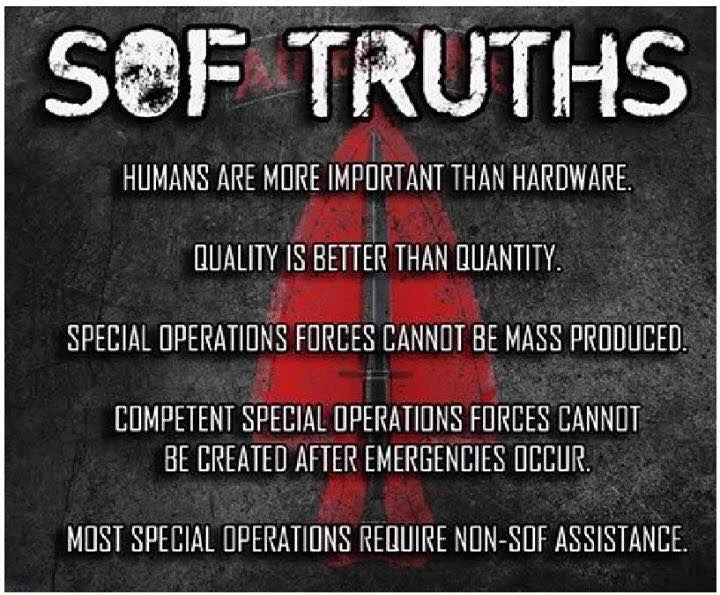Leadership as the Key to Team Performance
The performance of any team begins and ends with leadership. As a company commander in the 160th Special Operations Aviation Regiment (Airborne), I learned this lesson firsthand during combat operations and training missions. I want to share how leaders can inspire their teams, build trust, and unlock their full potential. From 2012 to 2014, my team remained engaged in combat operations in Iraq and Afghanistan, while simultaneously training across the United States to prepare for other potential contingency missions.
SOF Truth #1: Humans are more important than hardware
SOF are known for having the best equipment and gear. A quick online search will reveal countless images of well-equipped special operators. But make no mistake, we always trained and prepared to operate at the same level of precision without technology as with technology. But the challenge is not getting comfortable with your team and taking the eye off the ball for the future of the organization. So, developing a culture that truly embodies people over “hardware” means preparing them for the short term and also preparing them / the organization for the long term.
I was recently reminded of additional training I put my team through. We identified a particular mission environment that we had never trained on. We were proficient in both of them individually, but historically the risk of being asked to do both was minimal. So, we went to work to plan, prepare, train, and minimize risk to our team. The result was a 100% success and while we did not execute the mission set, the people and organization are better for it. (Forgive me lack of specifics for this mission set)
My time in this leadership role was during a time of high experience turnover exaggerated by National and Army level manpower decisions. In spite of this, we had to figure out how to deliver the capabilities expected of us. That required sending my middle experienced crews to professionally developing training, even though it would make the current training more difficult. “The Army believes that well-developed leaders are the result of progressive and sequential education, training, and experience. It promotes three pillars of leader development: institutional training, operational assignments, and self-development.” (Army Credentialing Opportunities On-line). The Army further explains that these roles are integral to individual development, leadership growth, and overall mission success. These roles develop well-rounded, capable, and adaptable Soldiers.

Begin with the end in mind
Stephen Covey wrote about this in his classic 7 Habits of Highly Effective People. To get anywhere you need to know three things; where you are at, where you want to go, and what is needed to get there. So, why wouldn’t leaders consider this for their people too? People are your most expensive resource in your business, right? Leaders develop the vision and they must be able to articulate it to their team in a concise framework.
“You can’t connect the dots looking forward; you can only connect them looking backwards.” – Steve Jobs

Leadership inspires through vision and coaching
“The only way to measure the distance you’ve traveled is by measuring from where you are back to the point where you started.” – Dan Sullivan in The Gap and The Gain: The High Achievers Guide to Happiness, Confidence, and Success

Our training wasn’t keeping pace with the experience levels we’d seen in past years. Recognizing this, my leadership team and I adapted our quarterly training plan to ensure we met critical demands without increasing risk or sacrificing quality. At the start of each quarter, I delivered a progress update alongside a clear 90-day roadmap. This included specific metrics: the number of fully trained crews, anticipated personnel transitions, and individuals identified for senior roles. I also outlined the resources we were dedicating to their development over the next 90 days. By doing this, we aligned the entire team around a shared vision and created clarity on how we would achieve our goals together.
Ultimately, what differentiates the impact of employees is leadership. Leadership sets the tone, establishes clear expectations, and fosters trust through candid and constructive feedback. Most importantly, it removes barriers that hinder employee performance.
The next time you find yourself questioning why an employee isn’t meeting expectations, ask yourself: does their leader have a clear vision for their development? If not, you may have hired a manager instead of a leader.
